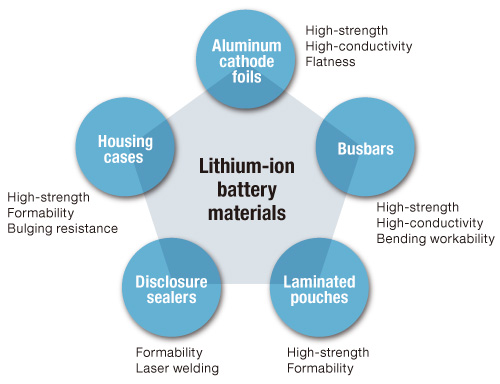Li Ion Battery Materials
Li Ion Battery Materials: Information To Know

The technological world is constantly bombarded with new innovations and technology. These technologies need a power source to function. The power source used is usually electricity. However, these new innovations are also striving at attaining increased mobility for more convenience to its users. Gadgets in need of mobility have turned towards batteries. Batteries, generally rechargeable, are employed to keep the gadgets up and running by producing electricity from their stored energy.
These batteries are primarily Li ion batteries. The increased usage of lithium can be attributed to the rising demand for batteries to power portable consumer electronic devices and electric vehicles (EVs). Batteries have particular lifetime and it is Li Ion batteries that offers the longest life cycle. They are also rechargeable and therefore can be considered a long term solution.
These batteries are primarily Li ion batteries. The increased usage of lithium can be attributed to the rising demand for batteries to power portable consumer electronic devices and electric vehicles (EVs). Batteries have particular lifetime and it is Li Ion batteries that offers the longest life cycle. They are also rechargeable and therefore can be considered a long term solution.
Why did Li ion batteries become Popular?
Li Ion batteries have crept their way into our lives and seem to be turning into an irreplaceable source of energy. We are heavily dependent on our gadgets in the present times and our gadgets are dependent on batteries for power. Therefore, we are indirectly heavily dependent on li ion batteries. The dependence on this power source is only going to get deeper over the years. The innovations of battery cars have the potential to be the next consumer of the power produced by the batteries.
As global warming is becoming rampant, humans are in search for a cleaner form of fuel to power their cars. Their search ended as improved li ion batteries hit the market. These batteries exhibited long life cycles and are capable of powering cars producing none to nominal pollution. All these factors have contributed to the rise in demand of Lithium Ion Batteries and consequently, Lithium Ion Battery Materials.
Different components of a Li Ion Battery
A Li Ion Battery is a culmination of several components working together to produce electricity. Chemical processes occur amidst the components to produce electricity. Here are the different LithiumIon battery materials that work together:
Anode: Lithium, graphite, lithium-alloying materials, intermetallics, and silicon are all suitable to be used as Anode material. Lithium is most commonly used as an anode material but has performance issues when it comes to recharge cycles. It suffers from low recharge cycles. The dendritic growth of lithium is yet another point of concern. The dendritic growth leads to eventual short circuits.
Cathode: The top-quality batteries usually have lithium oxides, vanadium oxides, olivines and rechargeable lithium oxides as the cathode. Layered oxides of cobalt and nickel are the most ideal material to be used as cathode. But, the rarity and toxicity of cobalt has prevented it from large scale usage. Manganese offers low-cost substitution but the cycle life it offers is very low.
Electrolyte: A robust electrolyte is the key to a good battery. An ideal electrolyte must be capable of withstanding high voltages, have a long shelf life and also provide a medium for seamless travelling of the Lithium ion.
Separator: Validating its name, a separator separates the anode and cathode to prevent short-circuits.